After the mass landing of Allied assault craft along the coast west of Nice on August 15, 1944 came the allied aerial bombardments of August 27 and 28, which badly damaged the port area of Monaco. Five days later, the naval battering of La Turbie and Mont Agel signaled the moment for the German troops to depart. On September 3rd, the 517th Parachute Regimental Combat Team, attached to the 36th US Infantry Division, arrived in Monaco.
Friday, August 31, 2012
Commemorating the Liberation of Monaco
On Monday, September 3rd, MonacoUSA will lay a memorial wreath to
commemorate the American Liberation of Monaco from German occupation 68 years
ago. The ceremony begins at 4 pm in the cemetery in Monaco, located just below
the Princess Grace Hospital. Among the groups that will be represented
are the American Club of the Riviera,
the American Legion, MonacoUSA and the Monaco Ambassadors Club.
After the ceremony, there will be an informal get-together at Stars and Bars on the Port. Everyone
is welcome.
Prince Albert II has also
planned a commemorative celebration, this one in and around the Palace. An exhibition in the Palace courtyard will
showcase vehicles, weapons, clothing and other unique wartime items. It will
run for two days (Sunday and Monday) and entry is free. On Sunday September 2nd, there will be a gala ball from
5 pm to midnight, with a jazz swing band and free entry.
On Monday, there will be parade through Monaco, starting
at 10:30 am on the Place du Palais (I'm told 10:30 although the poster above says 11 am). The parade will travel through Monte Carlo
and finish at the Maison de France, where a wreath will be laid.
Monaco was liberated by Allied Forces on September 3rd,
1944. The Principality had been occupied
by the Nazis for a year, during which many of its Jewish residents were
deported to concentration camps in Germany. So much
attention is focused on the Normandy landings that history has almost forgotten
how a southern offensive on the German-occupied Riviera not only led to the
liberation of its many citizens, but also opened what was to be a crucial
supply line from the Mediterranean to the Allies, as they approached Berlin.
Thanks to CityOut Monaco for
this historical information:
After the mass landing of Allied assault craft along the coast west of Nice on August 15, 1944 came the allied aerial bombardments of August 27 and 28, which badly damaged the port area of Monaco. Five days later, the naval battering of La Turbie and Mont Agel signaled the moment for the German troops to depart. On September 3rd, the 517th Parachute Regimental Combat Team, attached to the 36th US Infantry Division, arrived in Monaco.
After the mass landing of Allied assault craft along the coast west of Nice on August 15, 1944 came the allied aerial bombardments of August 27 and 28, which badly damaged the port area of Monaco. Five days later, the naval battering of La Turbie and Mont Agel signaled the moment for the German troops to depart. On September 3rd, the 517th Parachute Regimental Combat Team, attached to the 36th US Infantry Division, arrived in Monaco.
According to one popular story, a jeep with two American GI's came
racing down the road from Menton. The jeep drove into Monte Carlo and pulled up
to the Tip Top Bar, where one of the
GIs, the future-author Irwin Shaw,
jumped out, ordered some drinks and announced that Monaco had been liberated.
In no time at all, crowds of Monegasques were crowding around the Americans to
express their thanks.
Later, more Allied troops arrived for formal ceremonies, which were presided
over by a proud Prince Louis II and his grandson (and fellow French army
veteran), Prince Rainier.
With the eloquence and political aplomb of a future statesman, the
young Prince Rainier said "Now, more than ever, Monaco should be considered
a sovereign, independent and neutral state. If the Allies should require a
guarantee, I give them that guarantee..."
Monday, August 27, 2012
Californians Get Free Foie Gras in France
Last month, the state of California put into effect a law originally signed in 2004 prohibiting the manufacture and sale of foie gras. Many chefs, as you could imagine, are quite up in arms about it and have been fighting to get the ban repealed. Meanwhile most have taken the French delicacy off their menus while others are ignoring the ban, hoping that regulatory agencies are too busy to chase after them and impose the $1000 fine. Still others are using loopholes to work around the restriction, by offering toast and chutney ''with complimentary foie gras'' or promoting ''BYOF,'' meaning
Bring Your Own Foie. If you supply the foie gras, they'll cook it for
free and charge you for the accompaniments.
California restaurateurs had until midnight July 1 to legally sell foie
gras to customers. As the deadline approached, many restaurants saw an
increase in sales from customers looking for their last legal
taste. The Los Angeles Times reported hungry foodies embarking on "foie gras crawls" in the weeks before the ban took effect. This is the only current ban of its kind in the United States, although Chicago had a ban for a year before it was reversed.
To capitalize on the controversy--making lemonade from lemons--Jean-Claude Corda, the clever owner of the popular Bistrot des Alpilles in St. Remy de Provence is offering a free foie gras first course to any customer who shows a valid California ID. The dish, which normally sells for 14€, is served with typical accompaniments such as grilled bread and chutney. Jean-Claude buys the product from Maison Masse, a highly regarded producer in the Perigord/Dordogne region of France.
''California sees itself as a trendsetter,''
Jean-Claude says, ''and we wish to do the same in our own way by inviting Californians to discover, for
free, a typically French meal, from a famous company. Maison Masse, makers of
foie gras since generations, works closely with producers who love their work. And since the 'gastronomic meal of the French,'
with its rituals and presentations, was registered in 2010 on UNESCO's World Heritage List of cultural treasures, we want to keep this traditional French dish
in the American mentality.''
So why the controversy? At issue is the way in which foie gras--the term refers to the fattened liver of ducks and geese and the dishes made from it--is produced: the animals are force fed by tube to enlarge their livers and produce a silky texture (the practice is called gavage). As early as 2500 BC, the ancient Egyptians were fattening birds through forced overfeeding so it's hardly anything new. Still, that doesn't make it right, according to the animal-rights group PETA, which has posted a list of the five reasons to ban foie gras with several graphic photos. Detractors say these and other provocative photos circulating online come from unregulated farms in Europe....not the U.S.
So why the controversy? At issue is the way in which foie gras--the term refers to the fattened liver of ducks and geese and the dishes made from it--is produced: the animals are force fed by tube to enlarge their livers and produce a silky texture (the practice is called gavage). As early as 2500 BC, the ancient Egyptians were fattening birds through forced overfeeding so it's hardly anything new. Still, that doesn't make it right, according to the animal-rights group PETA, which has posted a list of the five reasons to ban foie gras with several graphic photos. Detractors say these and other provocative photos circulating online come from unregulated farms in Europe....not the U.S.
Up until now there have been just three producers of fresh foie gras in the U.S.: Sonoma Artisan Foie Gras in Northern California, Hudson Valley Foie Gras in New York and La Belle Farm, also in New York. (Plus, a few in Canada who export to the U.S.) I'm told that Sonoma Artisan Foie Gras stopped production on July 1st but their website says their farm aims to be humane and that "ducks are never
individually caged and roam free range for most of their lives." The
company publishes a list of industry issues here, illustrating their practices and position.
Back in 2009, the Village Voice did an extensive story about how foie gras is made at Hudson Valley. In summing up her findings, the reporter wrote: ''Personally, I would avoid foie gras from the producers in France and Canada that use individual cages. The fact that some industrial farms elsewhere are making foie gras in inhumane ways doesn't mean that all foie gras production is inhumane. You can buy humanely raised chicken, or you can buy chicken that's had a nasty, brutal life. The same goes for foie gras. If I had seen with my own eyes that Hudson Valley produced foie gras by abusing ducks, this article would have turned out very differently. But that just wasn't the case.'' (You can read the story here.)
Hudson Valley (and presumably the other U.S. producers) employ animal-welfare consultants to ensure their ducks are treated, fed and slaughtered humanely.
But back to the present. The Financial Times reports that Laurel Pine, the owner of Mirepoix USA which sells foie gras and other luxury foods, moved last year from California's Napa Valley to Reno, Nevada, in anticipation of the ban. Pine says she's planning to set up outposts along the border where Californians can legally buy foie gras...and planning to establish a courier service to deliver the product. ''In the meantime, Californian's are buying foie gras directly from me in Reno,'' she told me by email.
Another old friend at the foie gras forefront is Ariane Daguin; she owns D'Artagnan, the New Jersey-based purveyor of duck, foie gras, wild game and caviar, and sells to many of the top chefs in the U.S. (Ariane is also French foodie royalty, the eighth generation of a hotel/restaurant/butcher/charcutier family. Her dad, Andre, had two Michelin stars at the Hôtel de France in Auch, Gascony, and later headed the French Hotel and Restaurant Union (UMIH); he was also considered a foie gras master. Her brother Arnaud, also a chef, has a Michelin star at his guesthouse and restaurant Hegia in Hasparren, southeast of Biarritz. Her sister Anne had the bakery Le Petit Duc in St. Remy until selling it a month or two ago.) So if anyone has a strong opinion about all this, I knew it would be Ariane. 'We've never sold as much foie gras in California as we have since the ban,'' she tells me. ''Please let the farmers do their jobs and raise ducks for foie gras the right way, humanely and without stress, as they've been doing for thousands of years. Didn't we learn anything from Prohibition?''
Ariane also told me about a pending lawsuit against the State of California as well as a major lobbying effort to
push a bill in Washington that would make it impossible to interfere with the interstate commerce of agricultural products. Meanwhile “moving outside of California is not my ideal solution,” Guillermo Gonzalez of Sonoma Foie Gras told Food Arts. He's
a native of El Salvador who moved to California and opened the company in 1986; he and his wife have raised two children in Sonoma. “After 26 years,
we have made our lives here,'' he continues. We want to stay. It all depends on the
political activity now taking place. We are in a mode of wait and see.” (Read the Food Arts story here.)
Apparently more than a dozen countries, including Britain, Germany, Israel and South Africa, have essentially outlawed the production (but not the sale or consumption) of foie gras. For now, however, France continues to view it as a traditional delicacy worth savoring in many forms. So if you love it...and you come from California...and you find yourself in St. Remy...there's a silky slab with your name on it, with compliments--and complements--at the Bistrot des Alpilles!
Brasserie Restaurant Le Bistrot des Alpilles
Back in 2009, the Village Voice did an extensive story about how foie gras is made at Hudson Valley. In summing up her findings, the reporter wrote: ''Personally, I would avoid foie gras from the producers in France and Canada that use individual cages. The fact that some industrial farms elsewhere are making foie gras in inhumane ways doesn't mean that all foie gras production is inhumane. You can buy humanely raised chicken, or you can buy chicken that's had a nasty, brutal life. The same goes for foie gras. If I had seen with my own eyes that Hudson Valley produced foie gras by abusing ducks, this article would have turned out very differently. But that just wasn't the case.'' (You can read the story here.)
Hudson Valley (and presumably the other U.S. producers) employ animal-welfare consultants to ensure their ducks are treated, fed and slaughtered humanely.
But back to the present. The Financial Times reports that Laurel Pine, the owner of Mirepoix USA which sells foie gras and other luxury foods, moved last year from California's Napa Valley to Reno, Nevada, in anticipation of the ban. Pine says she's planning to set up outposts along the border where Californians can legally buy foie gras...and planning to establish a courier service to deliver the product. ''In the meantime, Californian's are buying foie gras directly from me in Reno,'' she told me by email.
Whenever I think of foie gras, I think of my old pal Michael Ginor, the co-founder/co-owner of Hudson Valley Foie Gras, the biggest foie gras producer in the country. So I rang Michael up yesterday and found him surprisingly upbeat. ''We're actually having our
best year yet,'' he said. ''Because of all the PR which foie gras has
received....sales are higher as awareness is heightened. And chefs in
California are still finding 'creative' ways to offer foie gras to their
customers so sales there have not greatly diminished.''
Another old friend at the foie gras forefront is Ariane Daguin; she owns D'Artagnan, the New Jersey-based purveyor of duck, foie gras, wild game and caviar, and sells to many of the top chefs in the U.S. (Ariane is also French foodie royalty, the eighth generation of a hotel/restaurant/butcher/charcutier family. Her dad, Andre, had two Michelin stars at the Hôtel de France in Auch, Gascony, and later headed the French Hotel and Restaurant Union (UMIH); he was also considered a foie gras master. Her brother Arnaud, also a chef, has a Michelin star at his guesthouse and restaurant Hegia in Hasparren, southeast of Biarritz. Her sister Anne had the bakery Le Petit Duc in St. Remy until selling it a month or two ago.) So if anyone has a strong opinion about all this, I knew it would be Ariane. 'We've never sold as much foie gras in California as we have since the ban,'' she tells me. ''Please let the farmers do their jobs and raise ducks for foie gras the right way, humanely and without stress, as they've been doing for thousands of years. Didn't we learn anything from Prohibition?''
Apparently more than a dozen countries, including Britain, Germany, Israel and South Africa, have essentially outlawed the production (but not the sale or consumption) of foie gras. For now, however, France continues to view it as a traditional delicacy worth savoring in many forms. So if you love it...and you come from California...and you find yourself in St. Remy...there's a silky slab with your name on it, with compliments--and complements--at the Bistrot des Alpilles!
Brasserie Restaurant Le Bistrot des Alpilles
15 Blvd. Mirabeau
13210 St. Remy de Provence
+33 (0)4 90 92 09 17
lebistrotdesalpilles.com
lebistrotdesalpilles.com
lba1@wanadoo.fr
Photos: The foie gras, Jean-Claude Corda and the Bistrot des Alpilles.
Photos: The foie gras, Jean-Claude Corda and the Bistrot des Alpilles.
Monday, August 20, 2012
Five Gorgeous Provence Gardens to Visit
Until very recently, the best gardens in Provence were very private and
impossible to visit. This is still true for many. But more and more first rate gardens are opening up, many created with
public visits in mind. Most of these have the French government label
“Jardin remarquable.'' What time to visit? April gives you the real Provence spring, with
wisteria, iris, banksia roses, the first artichokes and strawberries.
May has the most flowers, especially roses, but the least local
character. June and July bring lavender but everything else is beginning
to suffer. In August, plants are struggling and the light is terrible.
All the ethnobotanical gardens (such as the Jardin Medieval d’Uzès and the Prieuré de Salagon, both mentioned below) and food producing
gardens (like the Jardin des Sambucs), are good in summer. Late
September through November can be glorious in Mediterranean gardens,
where vines, fruit trees and creepers provide wonderful colour.
Like
many garden writers, I find that when I’m not near the garden I love
(my own), I love the garden I’m near! It’s hard to have favorites when
each garden must be taken on its own terms—no point visiting a cottage
garden if you like minimalism. But some gardens in Provence, among the
hundreds I have seen over the years, are still outstanding. And here are a few of my favorites. Happy
traveling!
La Louve
(at Bonnieux in the Luberon) is a small terraced garden created by
fashion stylist Nicole de Vésian between 1986 and 1996, when she was between the ages of 70 and 80. Beautiful in all seasons, it's now included in all
anthologies of iconic gardens and has inspired designers and home
gardeners worldwide. Its subtle, asymmetrical groupings of softly
clipped shapes in greys, greens and beige lead the eye from house to
garden to the wild landscape beyond. I was lucky to know Nicole de
Vésian and to write a book about La Louve and her other, little known
gardens called Modern Design in Provence: The Gardens of Nicole de Vesian. (The book is readily available in French but hard to find in English although they have it on Amazon.fr here. The English edition is just being reprinted and should be available soon on Amazon.com and Amazon.co.uk, as well as in bookstores.) La Louve was bought in 1996 by art collector Judy Pillsbury
who took good care of it but is now obliged to sell it again. Therefore, visiting
conditions vary. For info, email judithpillsbury@gmail.com or contact the local Tourist Office.
Another great garden between Avignon and St. Rémy is Les Confines, the home of designer Dominique Lafourcade, which is now open for group visits.
Dominique’s olive trees planted in huge Medici terracotta pots have
been imitated from California to Australia. Her “green garden” style
with colorful seasonal accents is very different from Vésian’s, inspired
by old country estates, not the wild scrubland of Provence. The
Lafourcade family (Dominique's husband Bruno and son Alexandre are highly regarded architects based in St. Remy) have created beautiful private domains all over
Provence for many famous people. Visits to Les Confines are for groups only; to make an appointment contact laure.jakobiak@abc-lafourcade.fr.
In a completely different mode is the Jardin des Sambucs,
in the Gard department west of the Rhône. The owners, Agnès and
Nicolas Brückin, began with land previously farmed by her family. It
took them years to create with their own hands this amazing mix of
plantsmanship and artistic imagination. Nicolas works with stone and
Agnès with plants while their daughter Marie serves good light fresh
food. This is a pleasure garden for all the senses, rich with scents,
hues and flavors, where visitors have a choice of shaded nooks for
siestas,. It is also a garden with a sense of humor, one of the most
original I have seen. You'll find opening hours, upcoming events and more on the website here.
And finally for a completely different approach again, Provence has two
first rate ethnobotanical gardens showing, in beautiful array, the many
uses to which plants have been put through the ages. The first, west of
the Rhone and tucked in the heart of a medieval town, is the Jardin Medieval d’Uzès,
the result of very hard work by three dedicated women who also make
their own ceramic labels and mosaics, and who regularly hold art
exhibits as well.
In northeastern Provence, in the pre-Alps, is the Prieuré de Salagon, where a much larger series of four gardens surround the beautiful historic domain which is also a serious research center.
For more info about Louisa Jones, visit her website here. You can also email her:ljones@orange.fr
For more info about Louisa Jones, visit her website here. You can also email her:ljones@orange.fr
Photos from top: 1-3: Les Confines. 4 & 5: La Louve. 6: Jardin Medieval d'Uzes. 7 & 8: Jardin des Sambucs.
Tuesday, August 14, 2012
Restaurant Prévôt: Melon Crazy in Cavaillon
Last
summer, my Brooklyn, New York-based friend Seth Unger visited Provence for the
first time...and I’m sure it won’t be his last. He and his family loved every
moment: the wedding they attended, their hotel, the landscape, the food
and wine. But one restaurant stood out and knowing how foodie
Seth is, I wanted to hear all about it; what he sent appears below. But first, a bit about Seth: He grew up in Miami Beach
and ran the switchboard at the Royal Palm, the hotel his great grandfather built in 1939. In
1993 he met his wife, Allison,
while attending Columbia University in New York. Seth went on to run an indie
label, work in the fight against AIDS and do web design. In 2001, he
joined Mike Bloomberg's Mayoral campaign in New York City and, after the
victory, worked in the Mayor's Office where he created NYC TV, Channel 25, in 2003. Four years later, he quit
to be a stay-at-home dad to his new twin daughters, now 5. In 2009, Hamburger
expert and filmmaker George Motz convinced Seth to help him with the NYC Food Film Festival, which they later brought to Chicago as well.
In 2011, Seth's company, Food * Films * America, launched its first iPhone app, Burger GPS, which locates great burgers all over America. Today,
Seth continues to expand the Food Film Festival series and consults. To reach
him, you can email him, follow
him on Twitter, find him on Facebook or follow his blog
Condimented. And here’s Seth’s review!
From the moment you step
through the door of Restaurant Prevot,
you’ll know that this chef really
likes melon. You’ll see melon paintings, melon topiaries, melon sculptures...
and all sorts of melony provisions in the mini melon boutique next to the
entrance. But this is no tourist trap. Quite the reverse: it’s a destination
restaurant drawing foodies from all over who know the stellar reputation of
chef/owner Jean-Jacques Prévôt. For 30 years, Jean-Jacques has been unfailingly
dedicated to promoting the local produce, crafting inventive dishes and
infusing the restaurant with his hospitality and warmth. Chances are you’ll be
greeted by Jean-Jacques' daughter Sandra Rose, who oversees the dining room and
loves to chat. Sylviane Prévôt, Jean-Jacques’ wife, works in the kitchen.
Menus are created around
seasonal locally sourced ingredients: asparagus from March to May, mushrooms in
October and November, game in December and so forth.
But the most important menu,
the one for which the chef is known, is the melon-based menu of summer. Cavaillon is the melon capital of Europe;
Cavaillon melons are the little ones with dark green stripes, known to be
incredibly sweet. Jean-Jacques
offers two Melon Tasting Menus (58€ or 69€, depending on the number of courses)
and a full à la carte menu (melon and non-melon dishes priced
€24 to €35.) The lunchtime three-course
prix fixe, which changes weekly, is €26—a good deal. In summer, Jean-Jacques
offers "Le Mac Prévôt," a ‘burger’ that contains no chopped beef, but
rather roasted foie gras, parmesan,
fried onions, chopped artichoke salad, lettuce and melon ketchup. The ‘’burgers’’ change with
the seasons too: In fall they’re made from mushroom and pumpkin; in winter from
black truffle; in spring from asparagus. And yes, the burgers are available for
takeout!
But the restaurant also offers a
degustation called the Menu Carte Blanche, for 85€ (or 115€ with four glasses
of wine). And since it was the height of melon season, and we had a hunch
there’d be lots of melon on it...we went for it. My wife and I are both melon
maniacs.
First came glasses of a sweet
homemade melon spirit called Melanis, served on hand-crushed ice. Then, a small
plate of mini treats: asparagus quiche with Kalamata olives, fresh melon balls
and more. Next was an edible spoon tapenade with a cup of rabbit confit with
fennel tempura. That was followed by a fritter and melon plate, and and a
fricassee of fried prawns and melon (which tasted, they told me, like beef
stew).
Then came fish and veal loin (with caramelized melon sauce), then
something called a Picnic Invitation: a gingham pouch sealed with a clothespin
and inside it, a small sandwich of goat cheese, rosemary, vegetables and melon
marmalade. The pre-dessert was a pineapple mango soufflé (hot and buttery on
the bottom, with toasted almonds on top). And the real dessert? A trio composed
of a bourbon milk shake, a strawberry-banana mille feuille and a pear-citrus sorbet. And as though we might
still be hungry (!), the chef finally sent out a tray of petits-fours.
Restaurant Prévôt is one of those rare
experiences that transports you to another place...the flavors, the creativity,
the hospitality. It may be the only restaurant in the world that serves an all
melon menu, executed to perfection to boot.
After the meal, Jean-Jacques
said to me "Partage La Passion!" meaning we share the passion for food.
And I say: I’ll never visit Provence without a trip to Prévôt!
Restaurant Prévôt's Melon
Menu and melon dishes are served from May through the end of September, as long
as the fruit is in its prime. The restaurant also offers cooking classes; see the
website for details. Restaurant Prévôt, 353 Avenue Verdun, Cavaillon, France, tel +33 (0)4 90 71 32 43. The website is here and you can email them: contact@restaurant-prevot.com. Prévôt is also on Twitter and Facebook.
Photos from top: 1. Jean-Jacques Prévôt (in hat) and his kitchen brigade. 2, 6, 8, 9: Seth and Allison ordered the 85€ tasting menu, a tsunami of dishes which included all the plates you see here...and much more. 3. The restaurant is celebrating its 31st anniversary in Cavaillon. 7. Portrait of a Restaurant Family: Jean-Jacques; his daughter Sandra Rose and his wife, Sylviane. 10. Melons figure prominently in the decor. 11. Allison and Sandra Rose talk food in the kitchen. 12. Each season, Jean-Jacques creates a ''burger'' from seasonal ingredients other than beef. The burgers are available to go.
Photos from top: 1. Jean-Jacques Prévôt (in hat) and his kitchen brigade. 2, 6, 8, 9: Seth and Allison ordered the 85€ tasting menu, a tsunami of dishes which included all the plates you see here...and much more. 3. The restaurant is celebrating its 31st anniversary in Cavaillon. 7. Portrait of a Restaurant Family: Jean-Jacques; his daughter Sandra Rose and his wife, Sylviane. 10. Melons figure prominently in the decor. 11. Allison and Sandra Rose talk food in the kitchen. 12. Each season, Jean-Jacques creates a ''burger'' from seasonal ingredients other than beef. The burgers are available to go.
Wednesday, August 8, 2012
At Home on the Range in the Camargue
Toodling
around the Camargue on Saturday I decided to drop into Le Mas de Peint, a gorgeous country-house hotel I’d been hearing about for years. Although
she was clearly busy, owner Lucille Bon greeted my friend and I like old pals and
offered us a quick tour. What a place!
In
1950, Jacques Bon bought what was then a vast sheep farm with a pretty 350-year-old
bastide (country home). Lucille, an architect, came into Jacques’ life
in 1983 and the couple married in ‘87. They renovated the property completely
in 1992 and opened Mas de Peint two years later. Today the family business includes the five-star
hotel and its restaurant; a 500-hectare rice and alfalfa farm; and a ranch
called Manade Jacques Bon,
home to 30 horses and 250 free-range, grass-fed bulls (taureaux). Hotel guests
enjoy a large pool, access to a private beach, massage, biking, horseback
riding, animal viewing by 4 x 4, bull competitions and shows, special events
such as live music and ‘’Journées Camarguaises.’’ More on that appears below.
In
total, the estate is 1300 acres and it’s quite unique and fabulous.
Jacques
passed away in 2010 but Lucille and
their son, Frédéric, have firmly kept the reins. If I had to sum up the vibe
here I’d say it’s unspoiled nature with pampering nurture--a fabulous
combination indeed.
As
we said our goodbyes, Lucille invited us back for the apero (drinks before dinner) and a one-hour gypsy concert at 7:30. As it turns out, she’s booked the guitar
quartet Gipsy del Mundo,
widely known in these parts and beyond, to play for an hour every Saturday in
August, while drinks and nibbles are served (non-hotel guests pay regular
prices). Non guests are welcome to stay on for dinner as well...but tables fill
up quickly so you should definitely book ahead.
In
summer, meals at Mas de Peint are served on a pretty candle-lit terrace, tented
with billowy fabric that lets breezes in and keeps mosquitoes out. The
restaurant was fully booked so we weren’t able to stay on but I’ve heard
nothing but great things about chef Vincent Laisney and his food. When the weather cools, meals are
served in the large, lovely old kitchen with its gorgeous stove and marble
buffet. (If you can’t dine at Mas de Peint, other nice options nearby are Chez Bob, La Chassagnette
and La Telline. We chose the five-table La Telline--arriving just at the 9 pm seating cut-off time--and
loved it, particularly the friendly warmth of Jean-Paul and Florence Sanchez, who
run their tiny restaurant in his mom’s
old house, a 19th century customs office. If you don’t feel like
driving home, they have a guest house as well.)
But
back to the concert for a moment. Gipsy del Mundo is led by father and son
guitarists Bik and Mario Regis, who played with two other skilled musicians. Bik
was an original member of Los Reyes, one of two family bands that later became
the Gipsy Kings, and is widely regarded as one of the best gypsy musicians
around. The music, sung mostly in Spanish, is soulful, romantic, evocative,
uplifting...and deeply woven into the fabric of the wild, marshy, ranch-filled Camargue.
Everyone in the room loved it, kids and adults alike. Bik is also a talented
painter who has exhibited as far away as Japan. Some of his canvases depicting
Camargue scenes are on view at Mas de Peint; others can be seen on his website here.
Want to stay? Mas de Peint offers
eight rooms and five suites, all unique in design and decor, with one suitable
for limited mobility. Rates range from €235 to €435 (high season) and if you
want the most-popular room, ask for The Loft. Upscale tent accommodations have recently
been added and they were a huge hit when a group from Hermès held a meeting
here not long ago. But they have to be specially arranged.
In season, the restaurant at Mas de
Peint serves lunch (à la carte) every day, and dinner every night but Thursday
(à la carte and prix-fixe available). All the info you’ll need about dining
appears on the Mas de Peint website here.
And yet another way to experience
the beauty Chez Bon is by signing up for a one-day Journée Camarguaise, where
you’ll learn all about the life of the Manade Jacques Bon and the French cowboys
(gardians),who look after it. The
full day of activities (10:30 am to 5 pm) includes a traditional ferrade (branding) and other
demonstrations, an apero and lunch, live music and a course a la cocarde (a difficult competition in which gardians
pluck ribbons from the horns of the bull). There are just two dates left this
season: September 16 and October 7. Prices are 38€ (adults); 19€ (ages 5 to
12); and free for kids under 5. To book: 04 90 97 28 50 or contact@manade-jacques-bon.com.
Mas de Peint is 1 km south of Le Sambuc on the route D36 in the Parc
Naturel Régional de Camargue,
southwest of Arles. Their contact info is: 04 90 97 20 62, contact@masdepeint.com; their site is masdepeint.com. Directions: From Arles, take direction Stes Maries de la Mer. Turn left onto the D36,
direction Salin de Giraud and La Sambuc, and go about 20 km until you see the
sign.
Meanwhile, merci beaucoup,
Madame Bon, for introducing us to your very-special corner of the Camargue!
Photos: (1) Kitchen Table: When the weather cools, meals are served in the bastide's large old kitchen, where guests can watch their meal being prepared. (2) At the Manade Jacques Bon. (3) The hotel building is 17th century. (4) Chef Vincent Laisney's food is considered some of the very best in the region. (5) In warm weather, meals are served on this pretty terrace. (6) All 13 guestrooms and suites are unique in design and decor. This one is an ''Elegance'' category room. (7) Beach party. (8) A junior suite. (9 & 10) More of chef Vincent's creations. (11). Flamants Roses: The legendary Camargue flamingos. (12) Here comes the Cavalry! (13) Jacques Bon, who passed away in 2010, and a dear friend. The Camargue is known for white horses. (14) A little taste of Gipsy del Mundo, who will play during the apero throughout August. Click the little vertical bars or the little arrow to play.
Subscribe to:
Posts (Atom)





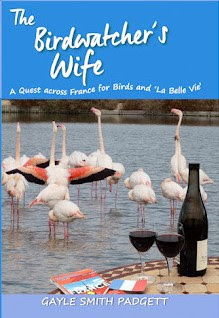






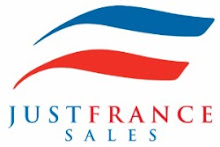
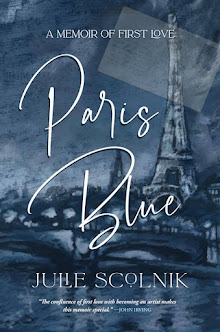

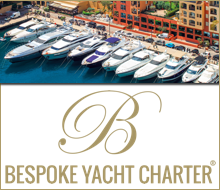


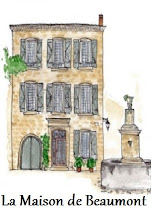
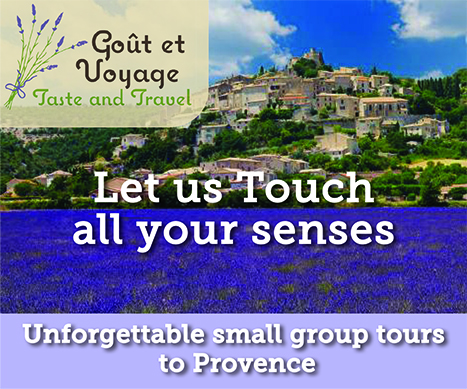

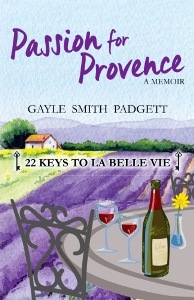
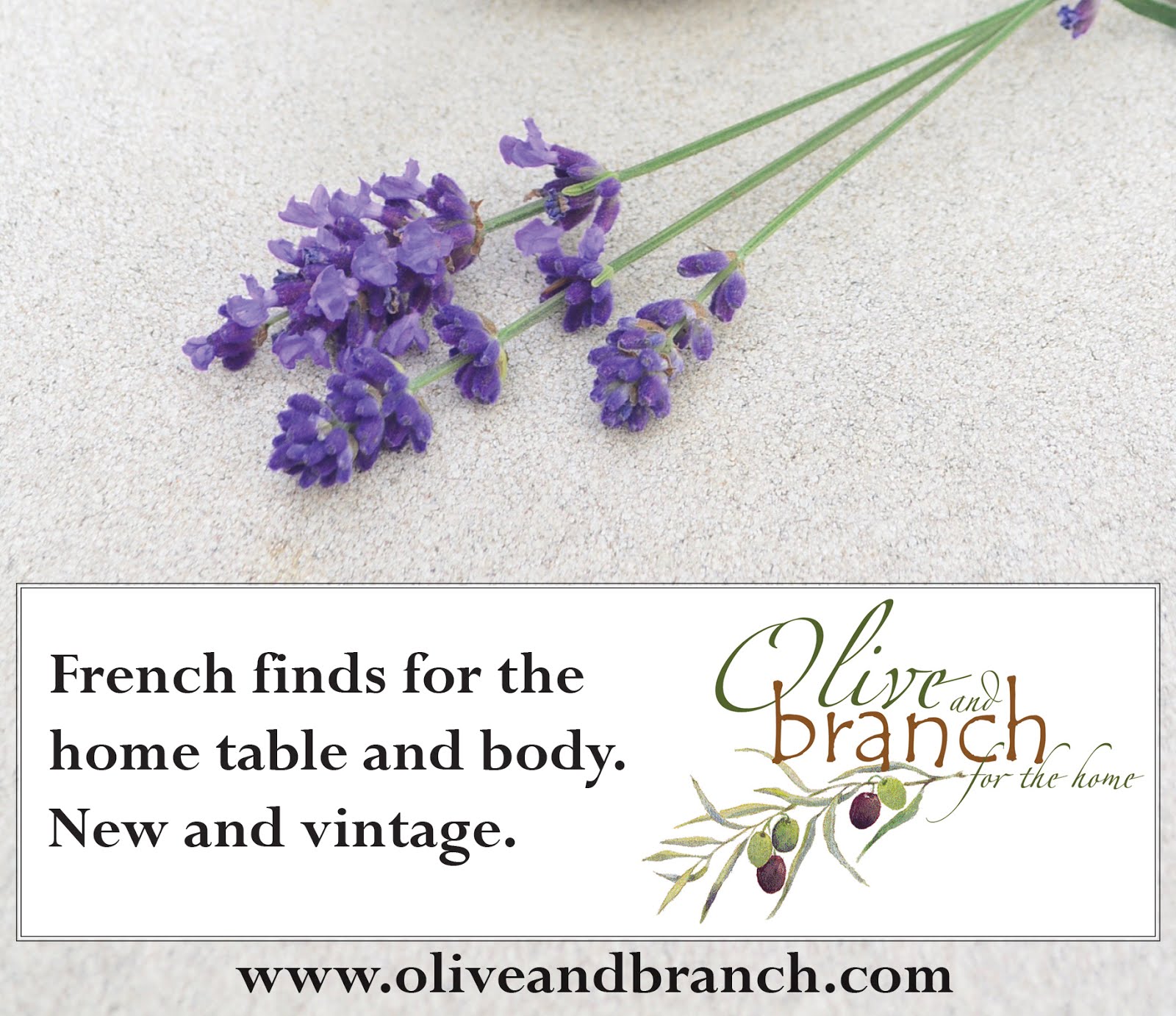

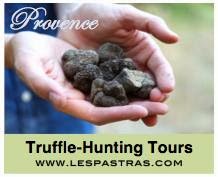







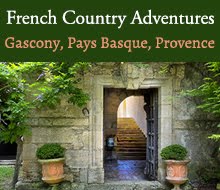

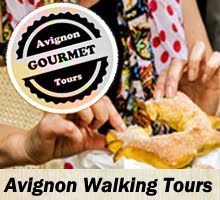

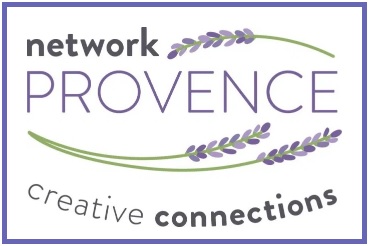

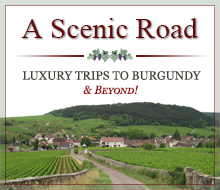



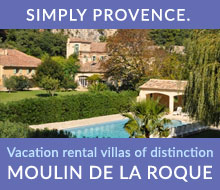



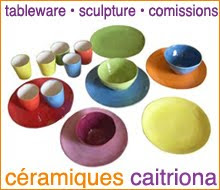











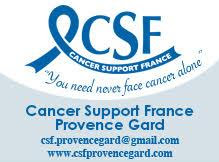


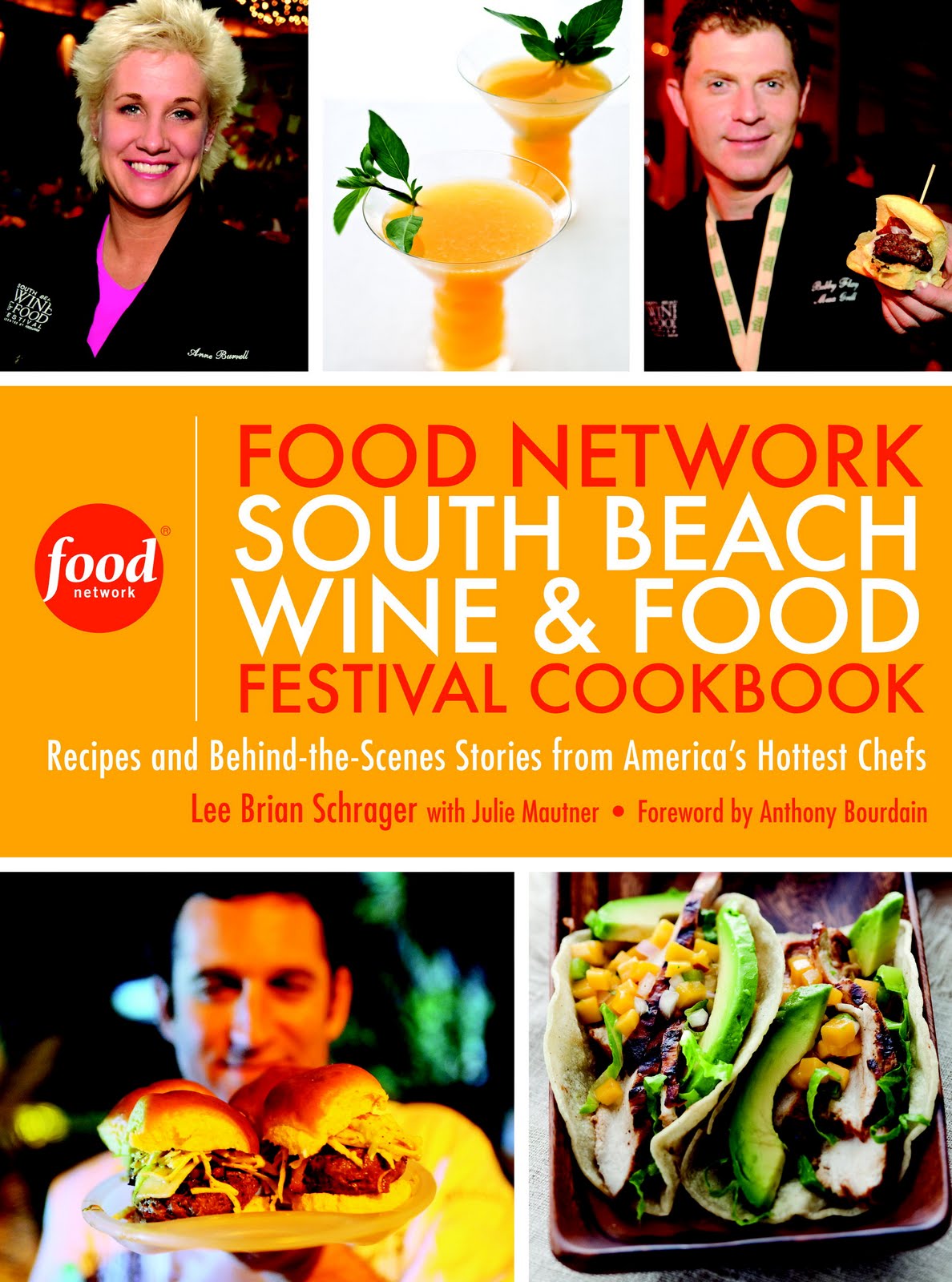.jpg)




__photo_Jones.jpg)
.JPG)

__%250d%250a+hillside_view_photo%250d%250a+__Jones.jpg)

















.JPG)




.JPG)
















